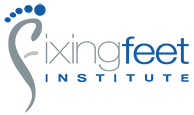At Fixing Feet Institute, we are proud to be a part of the Surprise, AZ community. This is truly a great place to live – for play, work, and raising a family.
Some of the most popular activities in Surprise (and our surrounding communities) include swimming, tennis, and golf. This is actually pretty cool if you think about it – those are all physical activities, and maintaining a physical lifestyle is so important for our health.
Beyond health benefits—more on this in a second—activities like these get people outdoors and provide relief from the stress of daily life. They also constitute opportunities to spend time with friends or loved ones, and even make new friendships and social connections.
Health Benefits from Swimming, Tennis, and Golf

Regarding physical health, those respective athletic endeavors can all contribute to your overall wellbeing in various ways.
Swimming provides a total body workout. As you swim laps, you burn calories and enhance your cardiovascular fitness. This can help you shed unwanted, excess pounds, while at the same time promoting healthy blood flow and forcing muscles to burn oxygen more efficiently.
Above those other benefits, swimming is a low-impact activity, which means you receive an abundance of health benefits – but without placing excessive strain on the joints in your lower limbs. The low-impact nature of swimming makes it a great exercise to incorporate into a cross-training program.
As with swimming, tennis also helps you to burn additional calories and achieve better cardiovascular health. A key consideration with this (and one we’ll touch upon shortly) is that it’s best if you play on a regular basis – instead of only periodically.
Now, one health advantage tennis has over swimming is the high-impact nature of the sport actually can contribute to better bone health. That might seem counterintuitive, but bones go through a remodeling process at the cellular level, and a certain amount of extra force can promote this process. That said, you don’t want to push yourself too much and risk injury.
Compared with the other two sports, golf might not seem as though it would have much to offer at first glance. There is a way, however, to make this popular activity a great workout for your body – take a pass on the motorized cart!
Walking is a vastly underrated form of exercise. It provides an array of physical, emotional, and mental benefits. Even better is when you walk on a sunny day and your body produces vitamin D (from being in the sun). Along with calcium, this essential vitamin is a key contributor to bone health. Your feet contain numerous bones, which makes this an important consideration if you want to stay upright and mobile!
(Of course, don’t forget to apply sunscreen before hitting the links! Sun exposure is important, but too much comes with the well-known increased risk for skin cancer.)
Foot and Ankle Injuries to Note

In spite of numerous health benefits, the fact of the matter is that any exercise or sport has an inherent risk of injury. This tends to be particularly true for foot and ankle injuries.
Sports like swimming, tennis, and golf are no exception to this general rule.
Swimming Foot and Ankle Injuries
Out of the three popular Surprise activities, swimming probably contains the least amount of foot and ankle injury risk. The low-impact nature of this exercise helps to keep that risk minimal, but there is still the potential for foot cramps and foot fractures.
Cramping tends to be more common during swimming than fractures, and this is often caused by dehydration or overuse. When muscles do not have adequate amounts of water or you are trying to sustain a particular position for an extended period—such as keeping feet pointed while kicking (to better push against the water)—they can seize up (cramp).
A muscle cramp can be quite painful. The best practice if this happens to you is to get to the side of the pool and then hop out and stretch the cramping muscle. With proper stretching, the cramp will go away shortly. Once it does, you may want to do some additional stretches and drink some water (actually, sports drink can be better for this) to keep it from coming back.
With regards to fractures, the most likely scenario is someone who is swimming laps uses “flip turns” once he or she gets to the wall.
If you’re unfamiliar with flip turns, you are basically doing a somersault in the water. (These are the kinds of turns used by competitive athletes, including swimmers you would watch in the Olympics.)
If a swimmer is too close to the wall when he or she does this turn, a heel bone (or two) could land hard on the concrete deck. Flip turns are typically done quickly, which means the speed of the heel as it comes down could be substantial and open the door for a possible heel bone fracture.
As noted, this isn’t a particularly common situation. If you’d still like to lower your risk, though, you can simply opt to do “touch turns” (touch the wall with your hands, move your legs and hips under the body, place your feet on the wall, and then push off).
Tennis Foot and Ankle Injuries
Given the greater amount of physical force placed on the lower limbs in sports like tennis, the foot and ankle injury is greater than for swimming.
If this is an activity you enjoy, however, there’s no need to let this stop you – precautionary measures can help keep you safe and injury-free!
When we talk about lower limb injuries from tennis, some of the bigger ones included ankle sprains, heel pain, muscle cramps and strains, and subungual hematoma.
Ankle sprains are simply a common injury for just about anyone. Sports that feature frequent turns or back and forth movements make them more likely, but even walking around or using steps can potentially leave you with a sprained ankle.
Since an ankle sprain happens when a foot twists too far to the side, a smart way to lower your risk is to make sure you are playing tennis in appropriate footwear. Your tennis shoes should fit comfortably, but still firmly cradle your feet when they’re laced up. Replacing old pairs once they start to lose their grip will also reduce your risk of this common injury.
For adults, the two major causes of heel pain are plantar fasciitis and Achilles tendinitis. Both are a matter of connective tissues—the plantar fascia and Achilles tendon, respectively—that have become injured on account of overuse or sudden, intense physical strain.
It is worth mentioning that Achilles tendinitis, specifically, tends to be particularly common for the “weekend warrior” crowd. These individuals aren’t terribly active during the week, but then give the proverbial “110%” on the courts during weekend matches. The problem with this scenario is that the body isn’t adequately prepared for the force loads. Further, weekend warriors are usually older, which means their connective tissues aren’t quite what they once were.
Both plantar fasciitis and Achilles tendinitis become significantly less likely if you wear activity-appropriate shoes (that fit properly), stretch your lower limbs on a regular basis, and ease into new activities.
Muscle cramps from tennis are more likely to affect calf and foot muscles, whereas strains usually hit the calf and groin muscles. Much like with those sources of heel pain, these are injuries you can prevent with a proper stretching regimen. Also, as was the case with swimming, adequate hydration can help you avoid a painful cramp.
Subungual hematomas are sometimes known as “black toenails,” and tend to be more often associated with long-distance running – but are still seen by tennis players for reasons you’ll see shortly.
So what is a subungual hematoma? Well, this is a matter of either bruising or bleeding happening to the soft tissue underneath a toenail in response to physical trauma.
In this case, the physical trauma is typically a toe that repeatedly hits the front of a shoe. This is especially likely when shoes are too tight, or when an activity requires frequent sprints forward that are followed by hard, sudden stops (such as when a tennis player approaches the net to volley the ball back to his or her opponent).
Golf Foot and Ankle Injuries
Many people wouldn’t associate golf with foot or ankle injuries. Sure, they might think about shoulder, elbow or wrist injuries from swinging a golf club, but what isn’t being factored is the shifting bodyweight distribution during the swing.
Also, driving a golf cart can actually contribute to a particular foot injury!
When looking at the lower limb injuries from actually swinging the club, ones that can develop include heel pain, metatarsalgia (forefoot pain), tendonitis, and lateral ankle pain. Morton’s and intermetatarsal neuromas also have an increased risk while playing golf.
We discussed subungual hematomas related to tennis, but this is also something that can happen when golfing. In this case, the most likely affected toenail is on the big toe of the foot that pivots (the back foot). This all depends, naturally, on how much weight is being placed on the front of that toe during the pivot.
Going back to the fact that driving a golf cart can actually lead to foot injuries, the injury we are talking about is extensor tendonitis. To understand how this can happen, it might help to look at the engineering of the brake pedal on a golf cart.
This pedal is usually made of two pieces, with the top part being the parking brake, which needs to be pressed downward in order to both engage and release the brake. Pressing downward like this can strain the extensor digitorum longus tendons. Doing it too much—something that can easily happen on hilly courses—irritates those tendons and tendonitis develops as a result.
Who would have thought there would be injury risk from driving a golf cart, huh? But it is something that can absolutely happen – and especially for frequent golfers.
Professional Foot and Ankle Sports Injury Treatment in Surprise, AZ

We hope you and your loved ones are able to stay safe and injury-free while participating in any of these local favorite activities. There are clearly preventive measures you can take—and please feel free to contact our office if you would like more—but it is basically impossible to eliminate all injury risk during any sport.
In the event you do have a foot or ankle in pain, contact our team at Fixing Feet Institute. We’ve been able to help many Surprise, AZ residents overcome pain and difficulty – and we can do the same for you!
Call us today at (623) 584-5556 or connect with us online for more information and to request your appointment.


